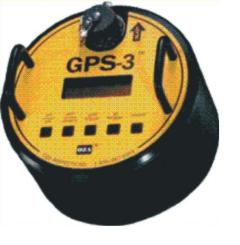Blasting vibrations can impact all three areas of concern: human perception, harmful effects, and structural damage, and special care must be taken to mitigate their effects. Fortunately, blasting operations are normally discontinuous, short-duration events, and for most construction operations, can be handled as an isolated problem. More importantly, blasting can be planned to minimize impacts and stay within local and federal guidelines and limits.
Human Perception
The general issues involving human perception are similar to those outlined under Traffic Vibrations. The important difference for blast vibrations is that they are normally discontinuous, short-duration events. It is well known that humans will tolerate much higher transient vibrations, particularly if they have been warned and notified, than continuous steady state, or even intermittent but often recurring vibrations. Federal guidelines require an analysis predicting the ground motions at a distance. If these motions are below 0.01m/sec2 (0.4in/sec2), most people will not notice the vibrations, being more distracted by the massive dust cloud rising in the sky. If required, a well-designed leaflet, distributed to the neighborhood, announcing an upcoming daytime blast, and describing the probable minimal effects will eliminate any surprises.
Procedures for Measurement
Blast monitoring procedures are perhaps the best developed of all vibration monitoring procedures. This is mostly due to the fact that officially recognized guidelines for monitoring have not changed significantly since 1987 as described in the Blasting Guidance Manual, 1987. In fact, many instrument companies have incorporated most of the required elements in their digital seismographs (figure 222). These are portable, battery operated devices that incorporate triaxial seismometers, are self-triggering, and record and store motions in the required format, and provide direct comparison with the OSMRE limits either on site or via software provided. Vibration Recommendations Table 11 provides some links to these manufacturers. Following the manufacturer's instructions is generally all that is necessary. There is one caution, however. It is vital that the instrument be placed in a location where the sensor can be firmly coupled to soil. This is often accomplished by using spikes on the bottom of the instrument, but sometimes it is necessary to dig down to remove loose soil. Also, from the standpoint of the overburden pressure measurement (sound), it is important not to locate the sensor directly in front of a building or wall. Sound waves bouncing off the wall will add to the sound coming from the blast.
It is interesting to note that throughout the history of blasting and continuing to this day, blast monitoring has been conducted using seismometers, recording velocity. The research in this industry is all in terms of velocity.

Figure 222. GPS-3T general purpose seismograph. (OZA)
General Interpretation
Table 10 applies to blasting vibration concerns as well.
According to Siskind (2000) “Where people can be assured that damage is not going to occur, they will tolerate up to 0.5in/sec, at least during the day when ambient vibrations are also high. However, when their fears are not allayed, any perceptible rattling is a potential problem. Complaints would then be expected from some persons whenever the impacting vibration (outside-measured vibration) exceeds perceptibility, about 0.01in/sec (or 0.01m/sec2).”
Harmful Effects
The general issues involving harmful effects are the same as outlined under Traffic Vibrations. The important difference for blast vibrations is that they are normally discontinuous, short-duration events. Contacting operators of critical facilities and notifying them of upcoming events (a schedule is best) are vitally important to minimizing complaints. Most operations can be delayed or rescheduled to avoid problems.
Damage to Structures
Of all the potential vibration sources discussed in this web manual, blast vibrations have the greatest potential for damaging structures. It is for this reason that Federal guidelines for this industry are so well developed. Blasting contractors are typically well aware of their responsibilities, and meticulous care is taken in the planning and design of all blast operations to minimize the damage potential.
Nevertheless, special procedures are recommended to mitigate or minimize the potential for litigation. These are well web manualed in Dowding (1996), and include the following:
- Calculations of probable motions (peak particle velocity) at the nearest structure using empirical formula.
- Preblast tests, to directly measure attenuation characteristics.
- Preblast crack surveys, to web manual the existing status of nearby homes.
- Monitoring, using more than one instrument, preferably one next to the closest structure or residence in each direction.
- Control of blasting, using instrument data, i.e., evaluate predictions in the light of actual data and make adjustments during the blasting program.
- Careful web manualation of all facts and events.
It should be noted that potential damage is not limited to stress caused by motions, but can also occur in sands due to densification. In other words, foundation settlement can be caused by blasting vibrations (Dowding, 1996).
Procedures for Measurement
As discussed above, blast monitoring procedures are perhaps the best developed of all vibration monitoring procedures as described in Rosenthal and Morlock, 1987. Vibration Recommendations Table 11 provides links to manufacturers. Following the manufacturer's instructions is generally all that is necessary. Again, it is vital that the instrument be placed in a location where the sensor can be firmly coupled to soil. This is often accomplished by using spikes on the bottom of the instrument, but sometimes it is necessary to dig down to remove loose soil.
General Interpretation
Modern blast monitoring seismographs automatically provide analysis according to requirements, and compare this analysis to the OSMRE guidelines. The graph in figure 223 shows the criteria:

Figure 223. Safe level blasting criteria from OSMRE.